The Condor Trek, Ecuador. Four days, 55 kilometers, 2,300 meters elevation gain. We trekked through some incredible landscapes, saw several volcanoes, stayed...

Condor Trek Day 1 - Distance: 7.5km, Elevation Gain: 320m
Our four-day Chimborazo climb was fast approaching, so the next segment of our trip was a 4 day, high-altitude trek through the Andes, which would get us properly acclimitized and ready for summit day. Ecuador has many, many options for trekking. We decided on the Condor Trek due to its strenuous nature, long distances, high altitude/elevation gain, and the mystery and solitude of being a less traveled and documented trek. After a little bit of confusion with our transportation to the trailhead, we were dropped off in the rain at a small house/checkpoint. There were several burly Ecuadorian men helping unload our equipment and getting us checked in. They quickly dispersed and a small, stout woman named Monica stepped forward and introduced herself as our guide. Much to our surprise, we were assigned what to us seemed the least capable guide of the group. We said hello, put on our mud boots, took a short bathroom break, and off we went into the soggy, sloppy wilderness.
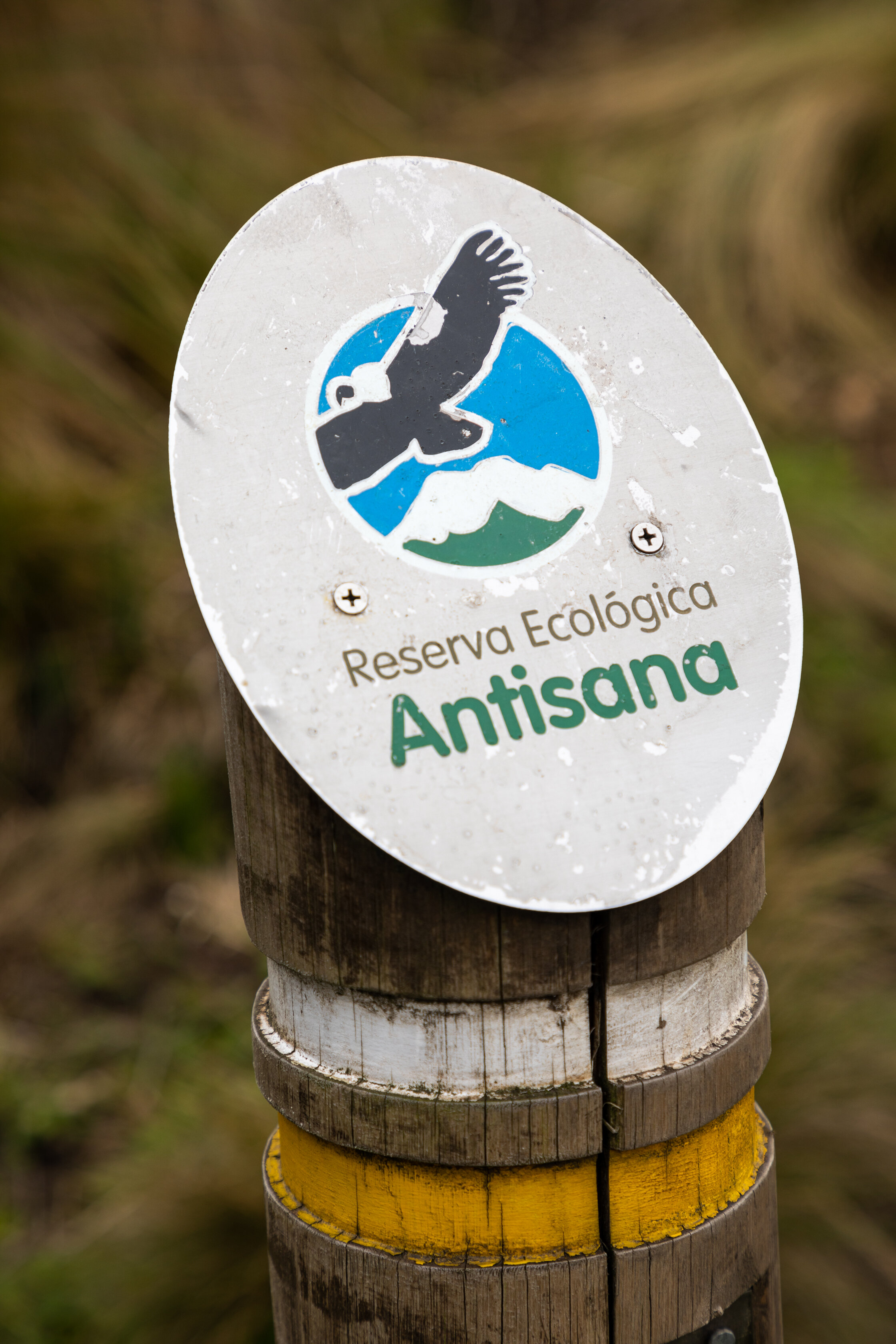

As the skies cleared we hiked our way through the Cayambe-Coca Reserve trying our hardest to keep up with Monica. Despite her stature she was a fast walker unaffected by the altitude, distance and elevation gain. Her initial appearance had deceived us, and we found we were being led by a seriously tough little Ecuadorian woman. We even had to ask her to slow down a bit when the altitude was affecting us.

The distance on day one wasn’t bad, only 7.5 kilometers. What we hadn’t anticipated was the challenging terrain. Elevation gain was a factor, but more than anything, the mud was causing us the most fatigue. Each step was a battle to avoid deep puddles and being sucked into the saturated earth. Luckily we were provided with mud boots. We hesitated at first to put them on, the idea of rubber boots was a little bit silly. However, we quickly appreciated how crucial to this trek these simple boots would prove to be. I couldn’t imagine slogging through this mucky landscape in regular hiking boots!

Even though the colors were somewhat drab, the gold and green landscape set against the ominous grey clouds created a unique and beautiful backdrop for our long day of hiking. We found that many of the landscapes in Ecuador were suited for grey skies. We don’t see many clouds in Southern California, so it was enjoyable being surrounded by dramatic skies all day long. The plants in this area were small, tough, and oftentimes vibrant in color, offering a little highlight of color in an overall muted landscape.



After several exhausting miles we crossed into the Antisana Reserve. We stopped at the summit of a small mountain for a short break. Off in the distance we were finally able to see Antisana, the massive volcano looming over this section of the Andes. We caught our breaths and admired the vast, rugged landscape that lie between us and the volcano. Camp was somewhere down in one of those valleys. The thought of a nice dinner and resting our tired feet helped us get back on the trail. Every time we stopped to shoot video or fly the drone we had to explain to Monica what we were doing. It was funny because she did not speak English, and our Spanish is not very effective so we had several miscommunications.
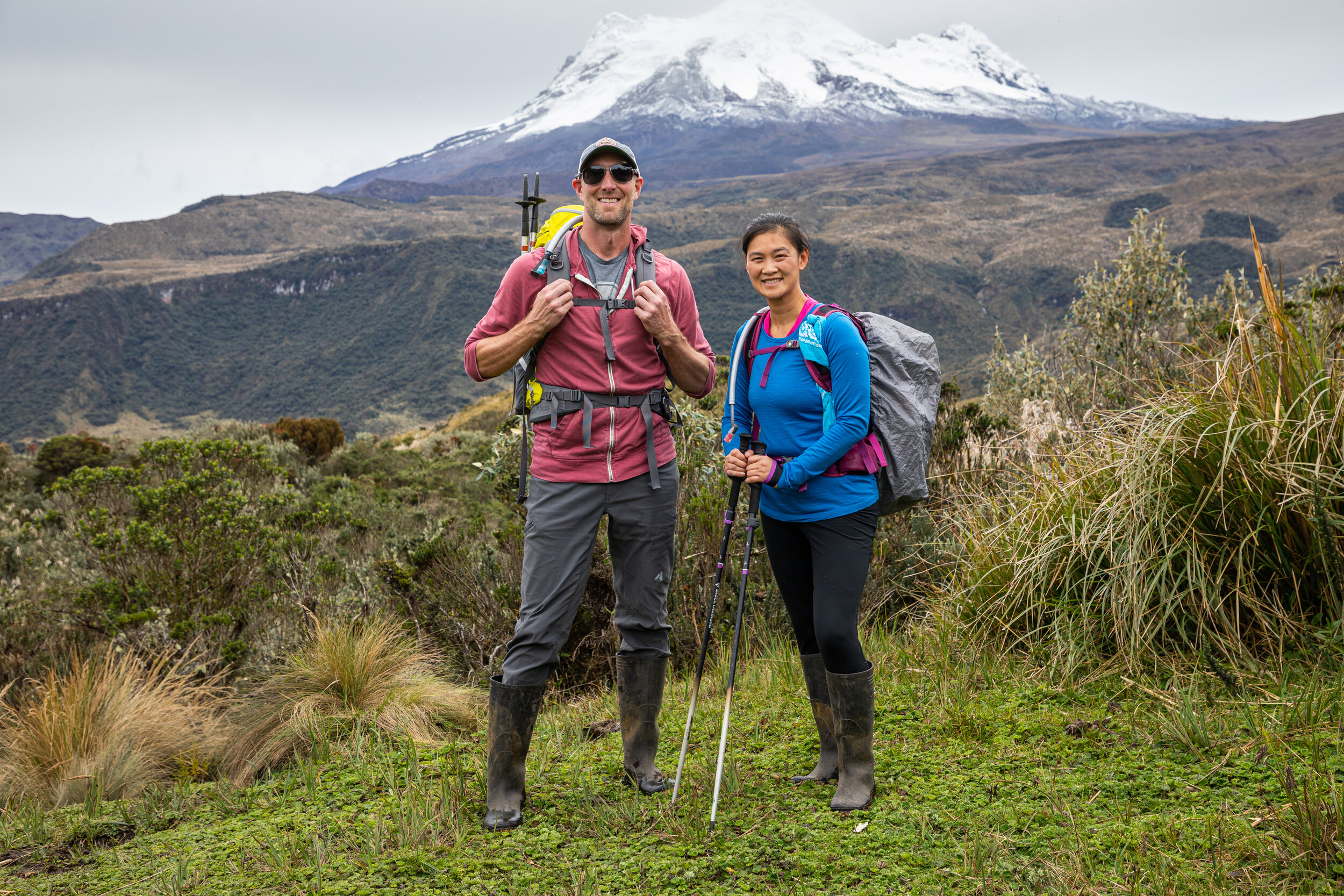

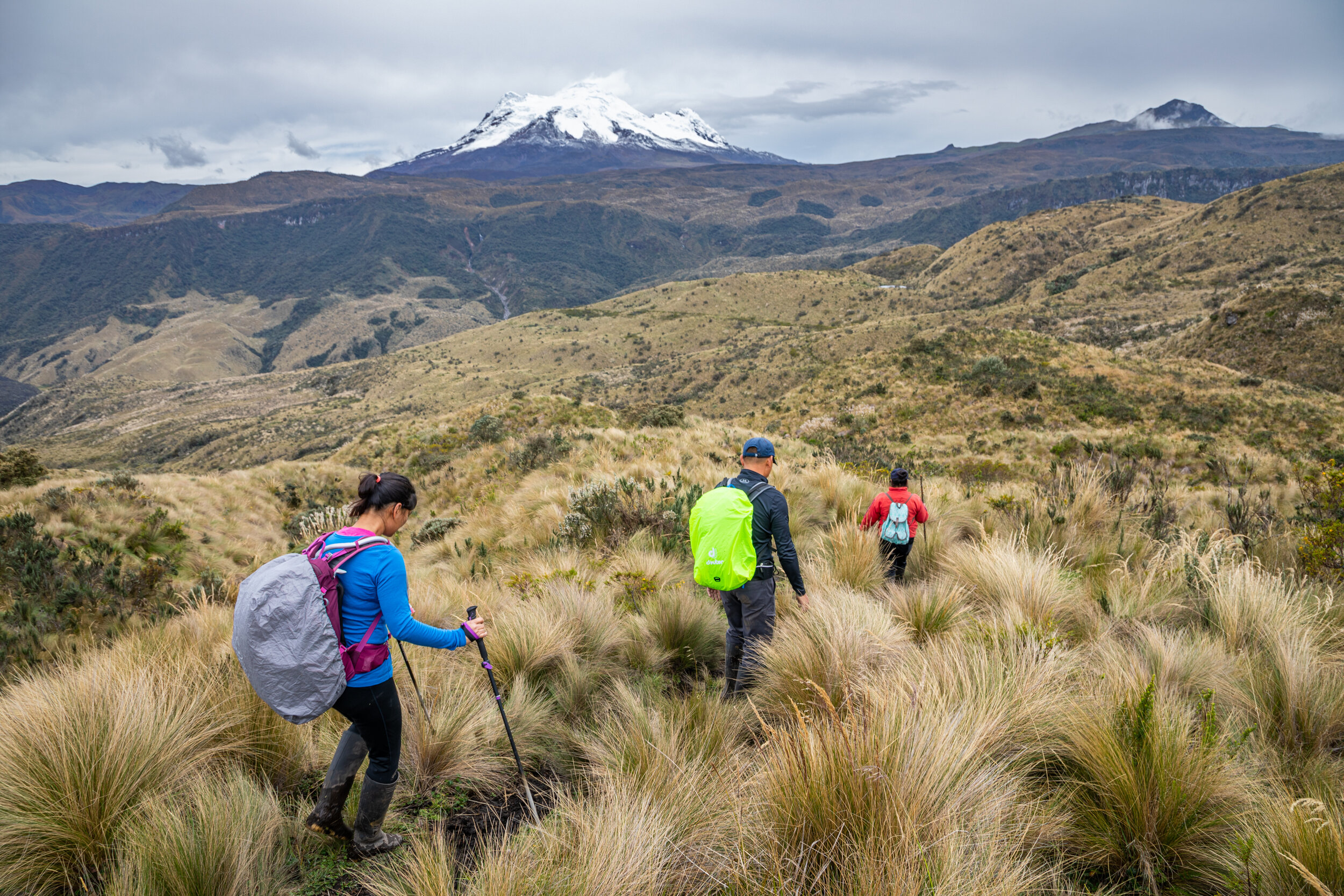
We hiked our way through the mud and over several more rolling hills before we finally spotted camp, already set up and waiting for us to arrive. Our other guide and his mules had gone ahead and set up camp so it was ready upon our arrival, a luxury we aren’t used to having. Even though we could see our tents, it was still a long distance away over this difficult terrain.





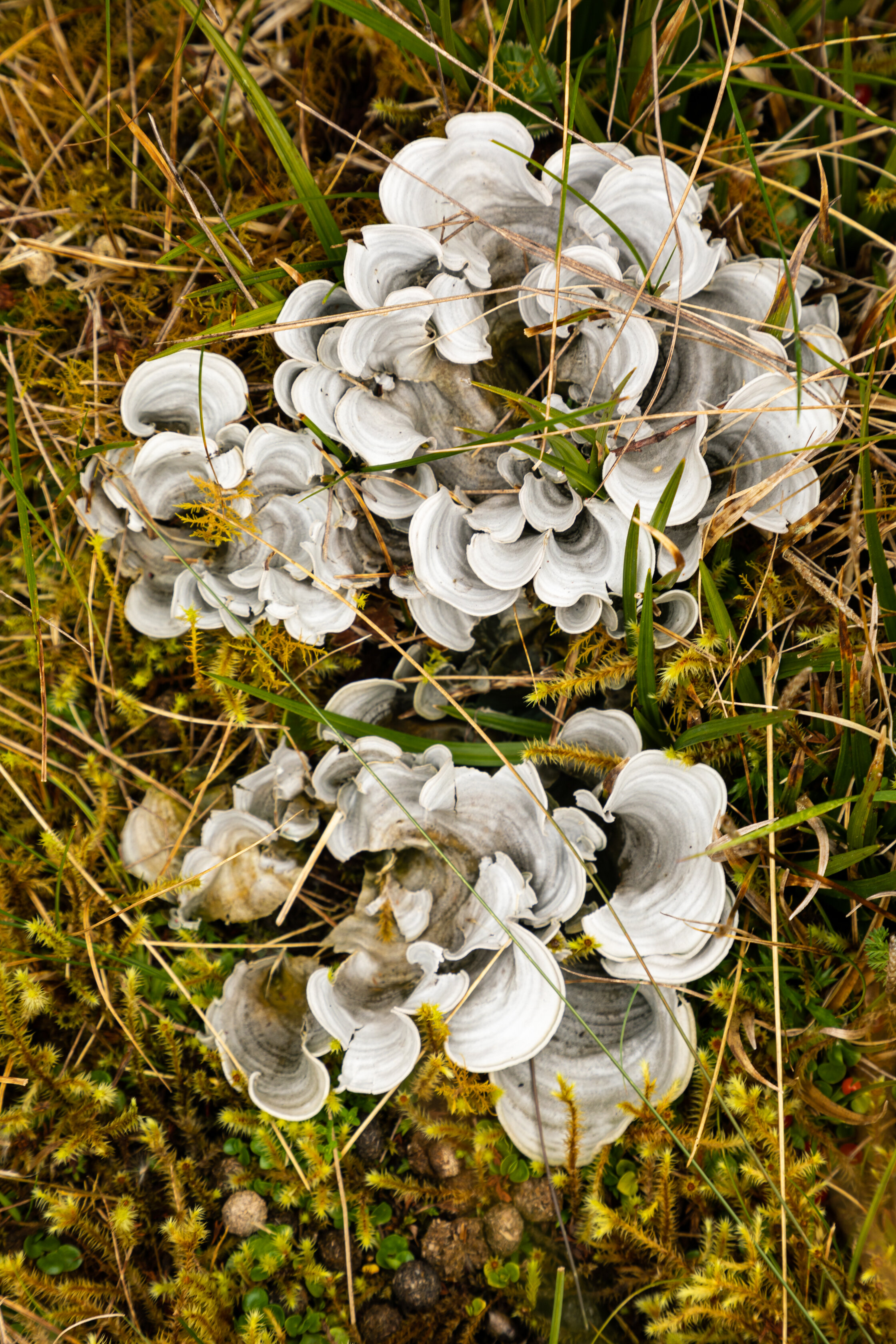

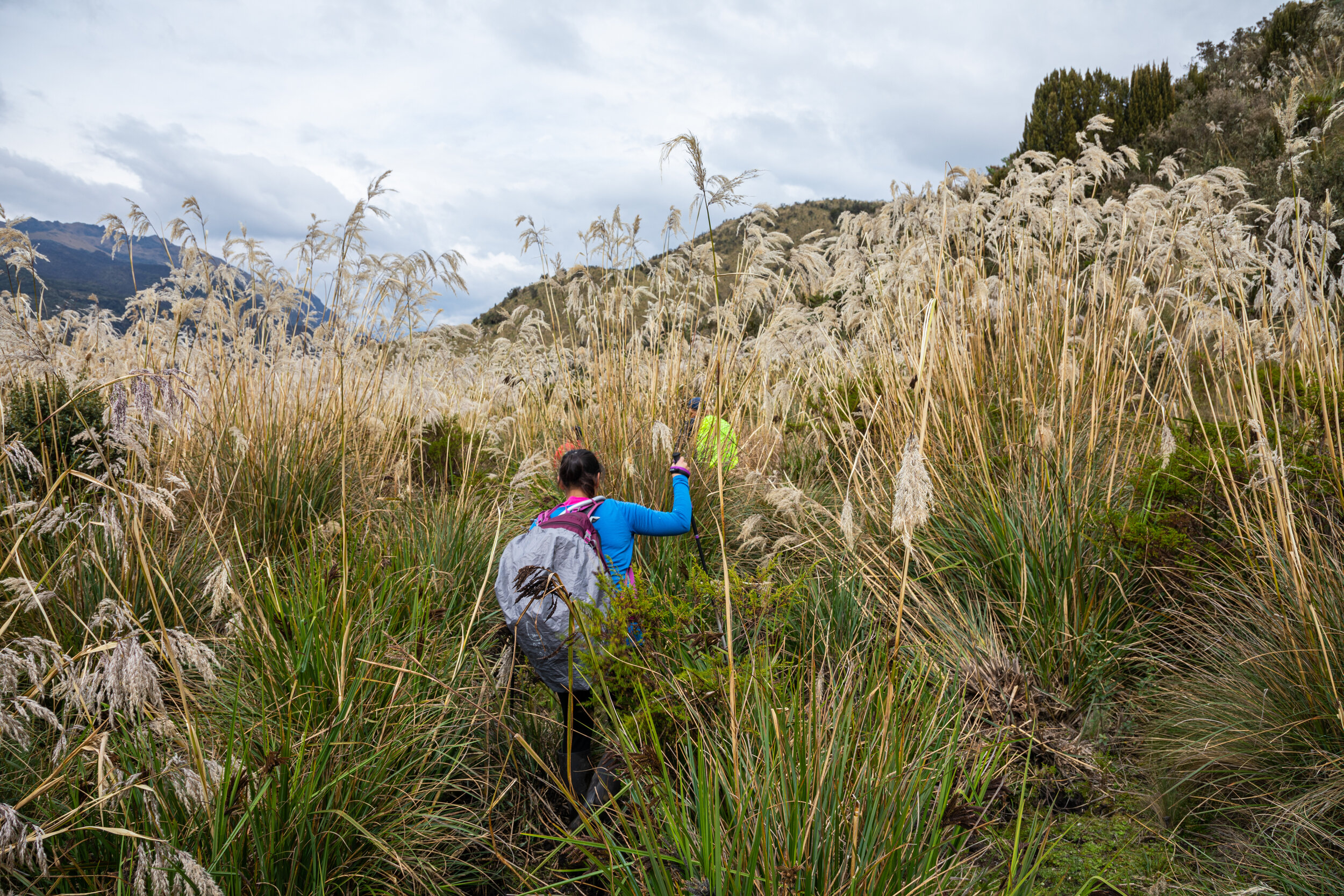

We were exhausted as we entered camp at the end of the first day. We had to wring all the water out of our socks and clean our filthy mud boots. Leaving everything out to dry, we sat down to a delicious dinner served in the food tent. It was a welcome luxury to have a cook with us so that when we got to camp we didn’t have to worry about cooking, cleaning, or even setting up our tents.




Off in the distance we heard some menacing thunder rolling towards us, and eventually the lightning came with it. Luckily the weather cooperated with us the entire trek and the storm passed by to the east, narrowly missing us but giving us a little light show to end our day.

There were two things about the Condor Trek that really stood out and made it such a special trek. First, the lack of people was something rare that we’ve never experienced on any trek. Over the course of four days we spotted two hikers far off in the distance, we met a local farm owner, and a pair of permit checkers. That’s it. Second, we absolutely loved the location of each campsite. Our guides chose unique and picturesque spots surrounded by natural beauty and great views. Every day we looked forward to our campsite, knowing it was going to be a special spot. Camp number one was at the head of an enormous lake, surrounded by mountains, waterfalls, and rivers flowing through the isolated valley.



Based on Ecuador’s climate, we were expecting cloudy, rainy nights. Instead, we were pleasantly surprised with a vibrant sunset every night of the trek.
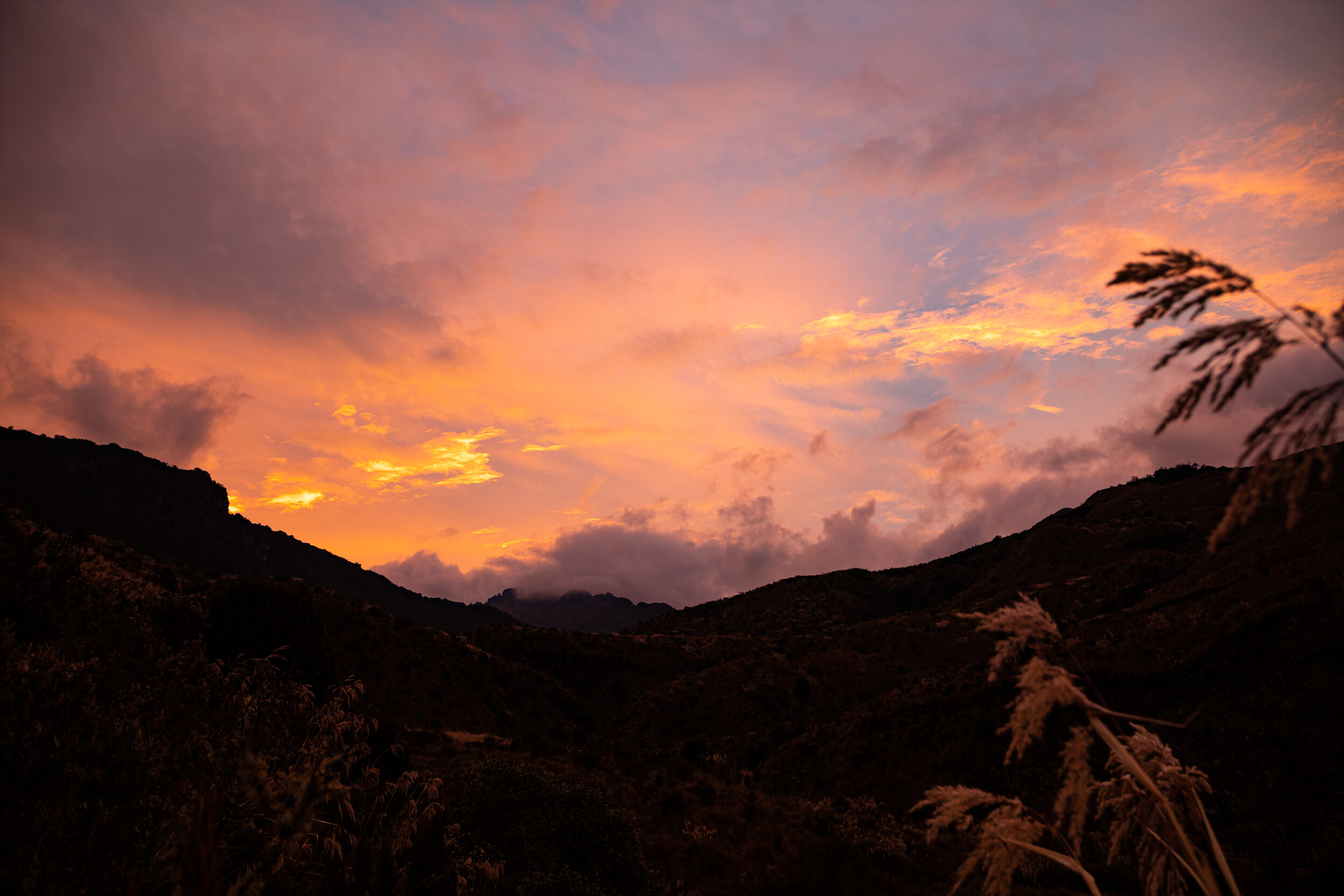

Condor Trek Day 2 - Distance: 12km, Elevation Gain: 780m
We woke to a chilly and grey morning. Luckily the overnight storms passed by without directly hitting us so we began day two dry and ready for some more acclimation. Our first goal of the day was to hike out of our nice protected valley. It didn’t look like a difficult climb from camp, but once we began it was a non-stop torturous ascent for almost 750 meters through the mud and brush of the steep mountainside. Every time we thought we were finished climbing another steep ascent presented itself and up we went.
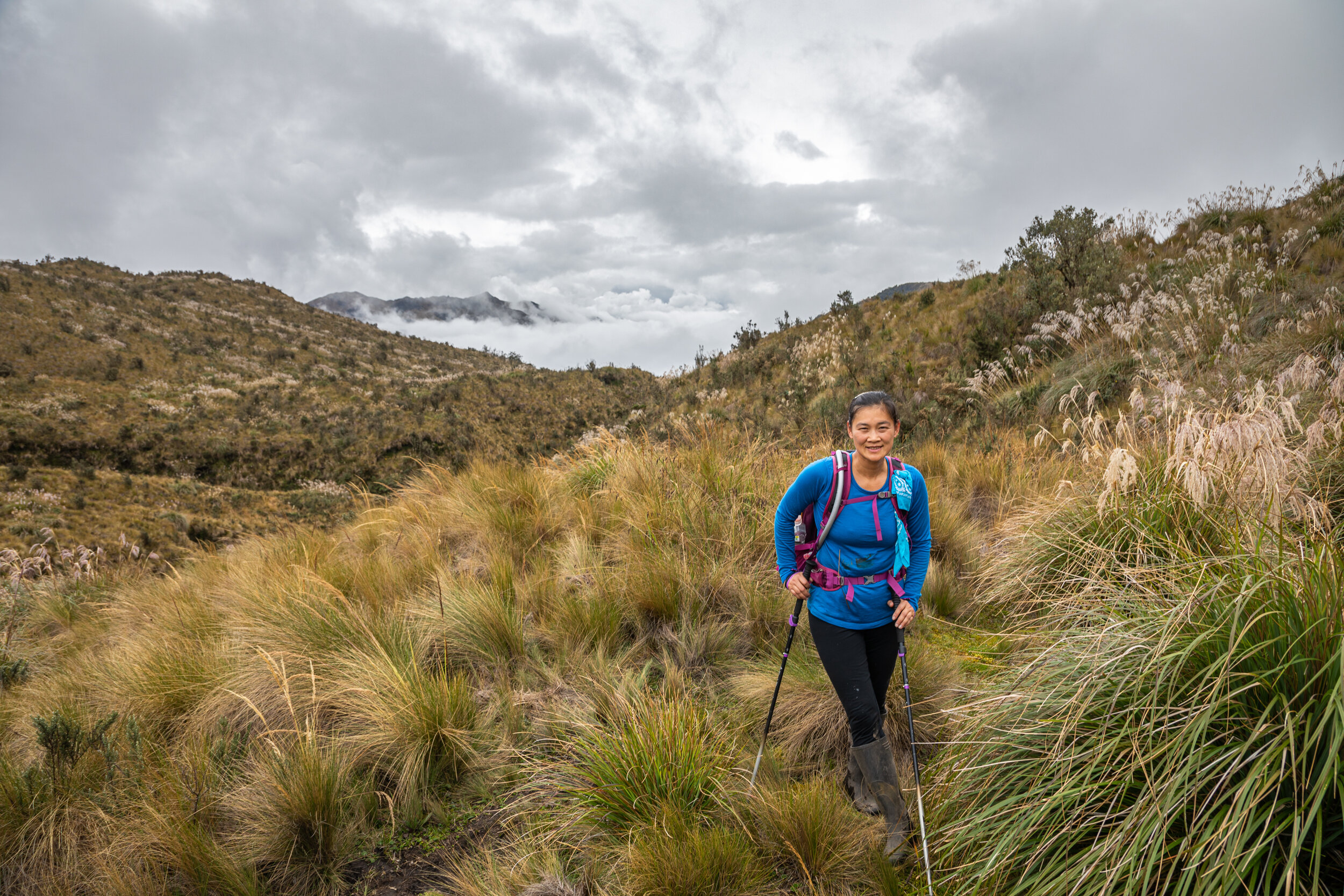

The plants on the Condor Trek were very unique and told us a lot about each area. The majority of the lower altitude slopes were covered in sharp, tough plants. If one of us stumbled into the bushes, we were almost certain to get scraped up by these sometimes dangerous yet beautiful plants. The plantlife was generally low to the ground and very hardy, adapted to protect itself from the harsh, rainy, windy environment.



We had an unexpected companion the first three days of our trek. This old ranch dog lives with Monica and her family. As we set out on the first day he slipped past the fence and decided to join us. We never learned the dog’s name, but we learned he is around 14 years old, has Parkinson’s disease, and loves being out in the wild. He would disappear to chase a rabbit or bird, then burst back onto the trail momentarily startling us all. This old dog had more life in him than any city dog we’ve ever met, and lives as happy a dog life as a dog can live. Unfortunately he wasn’t allowed on a farm we passed through on day three so he just walked home, apparently a trip he’s very familiar with.


We were so thankful for the mud boots. Once we got used to them we felt invincible and were able to step in the deepest of mud puddles without worrying about the consequences. A little over halfway up the initial ascent we passed the worst of the mud, but decided to leave our mud boots on just in case. As we climbed we watched as the valley was engulfed in clouds. A storm system was following us from the east and we were constantly on the verge of having a really wet day.



As we slowly climbed higher and higher towards the base of Antisana the landscape began to change dramatically. The mountains flattened out a bit and the muted yellows and greens of the flowing grasses gave way to vibrant, tiny forests of odd little plants carpeting the ground as mini rivers snaked their way down the hillside. We had to step carefully for fear of tramping over this delicate, wonderful little world.

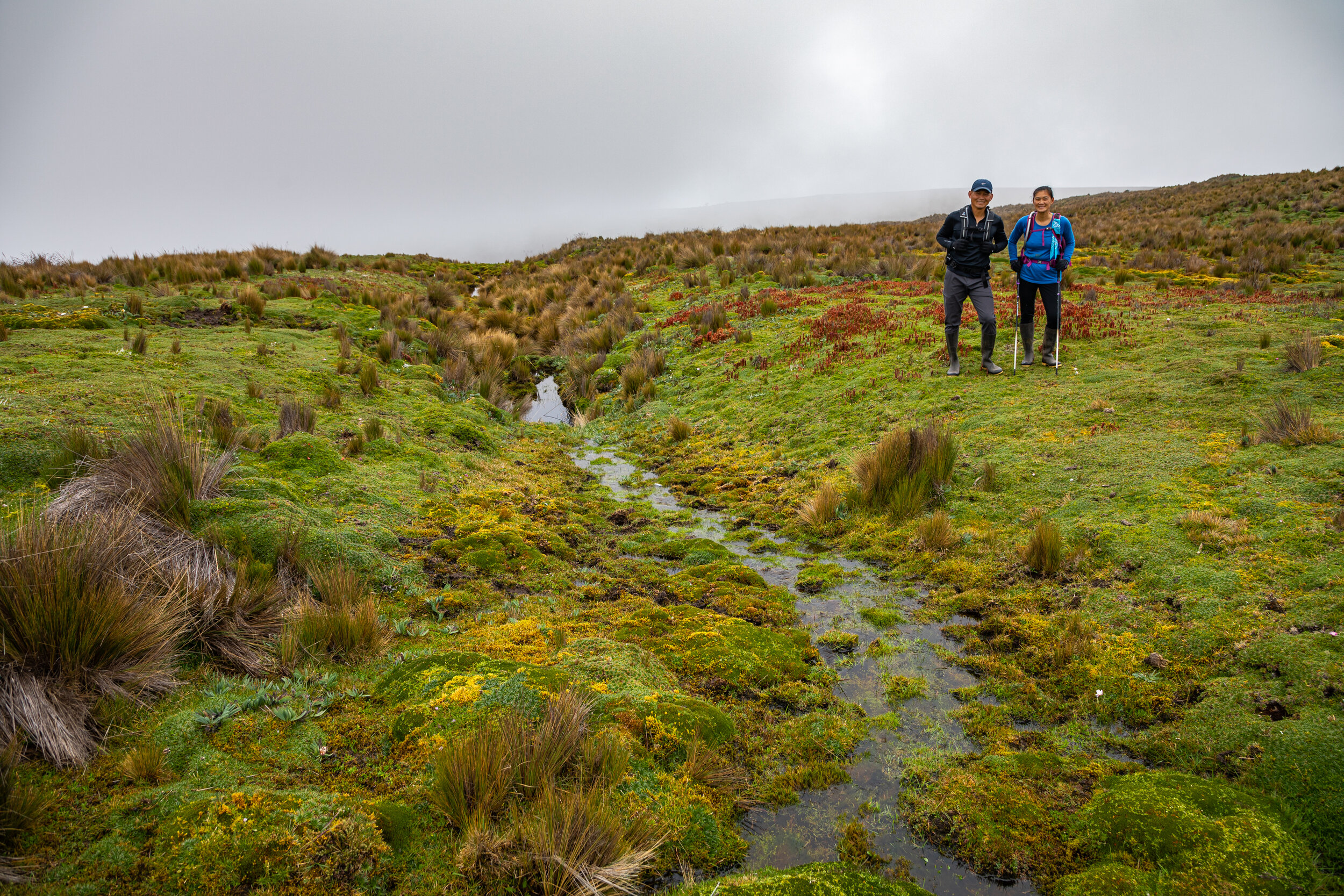


We felt like we were walking into the clouds as the sky grew darker. We were feeling the exhaustion setting in. The combination of high-altitude, muddy terrain and long distance started to wear us down. I was barely able to kneel down and photograph the plants. Every time I knelt, I would stand up to a massive headrush which would almost knock me back down every time.



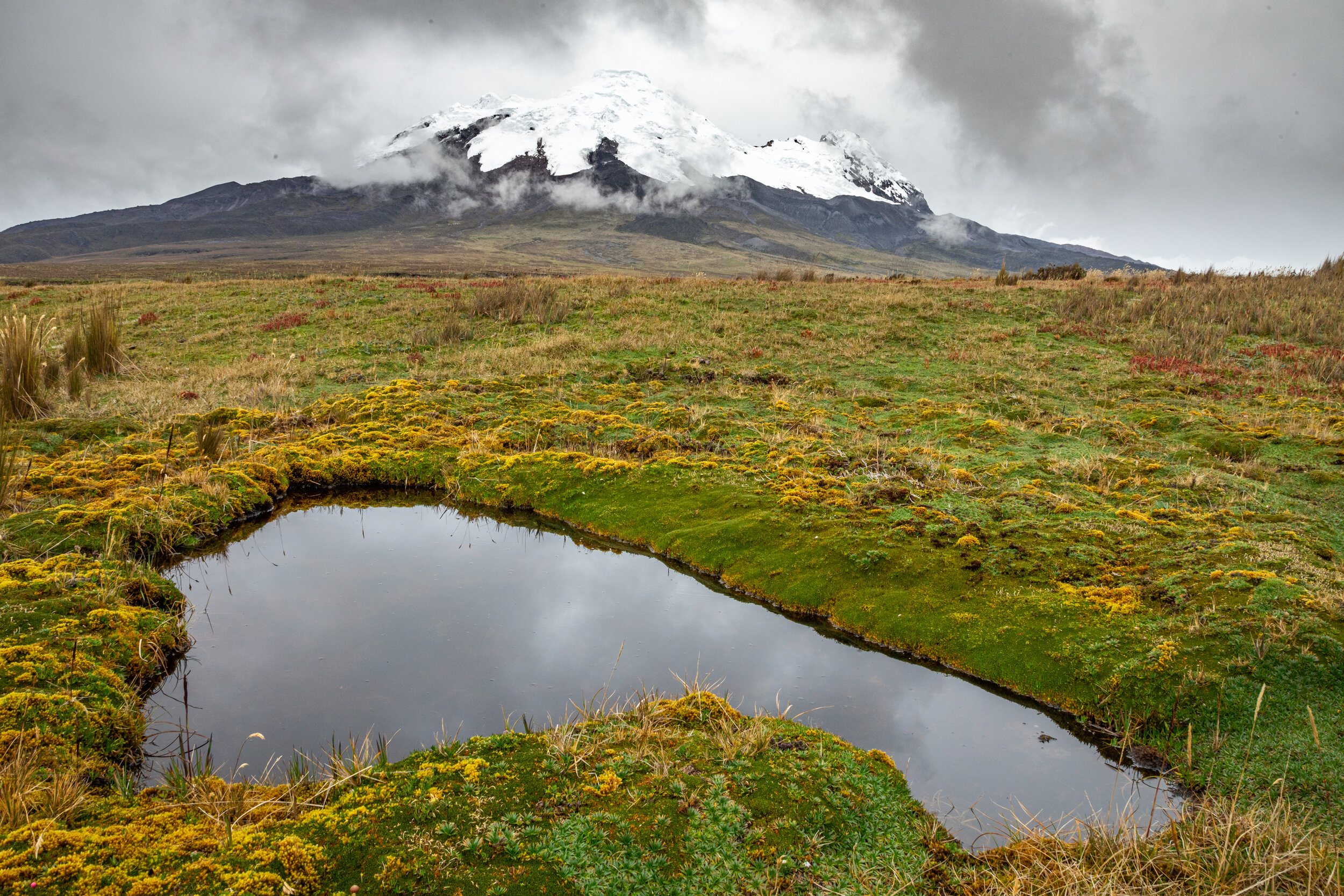

After an exhausting climb we finally reached the 4,500 meter pass at the base of Antisana. We took a much-needed lunch break near the lake. It was a beautiful spot with the reflection of Antisana playing across the surface of the water. The sky was growing darker and more turbulent, so after about 30 minutes we decided it was time to move on. Our mules, the cook and the dog passed us by in order to get to camp first.
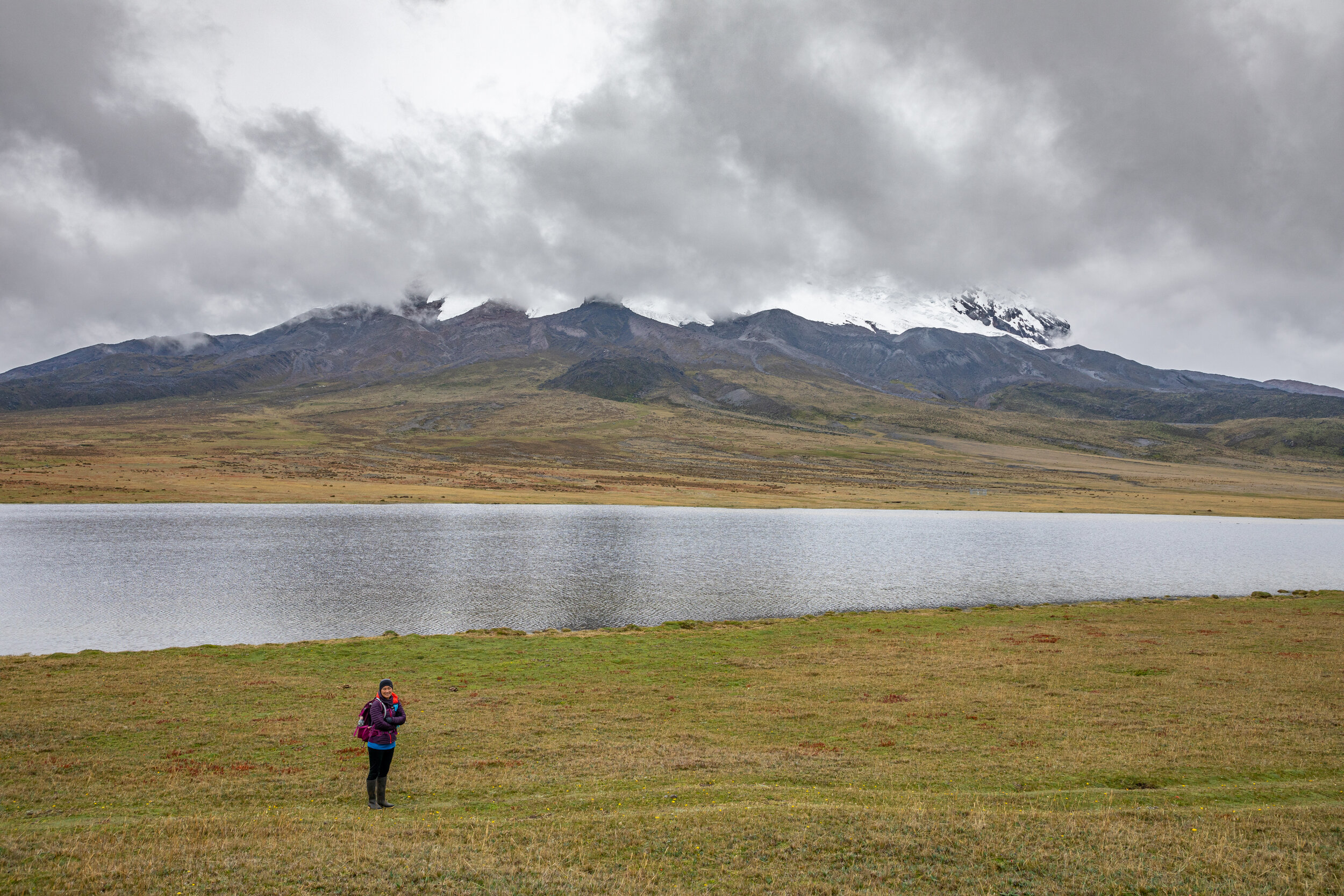






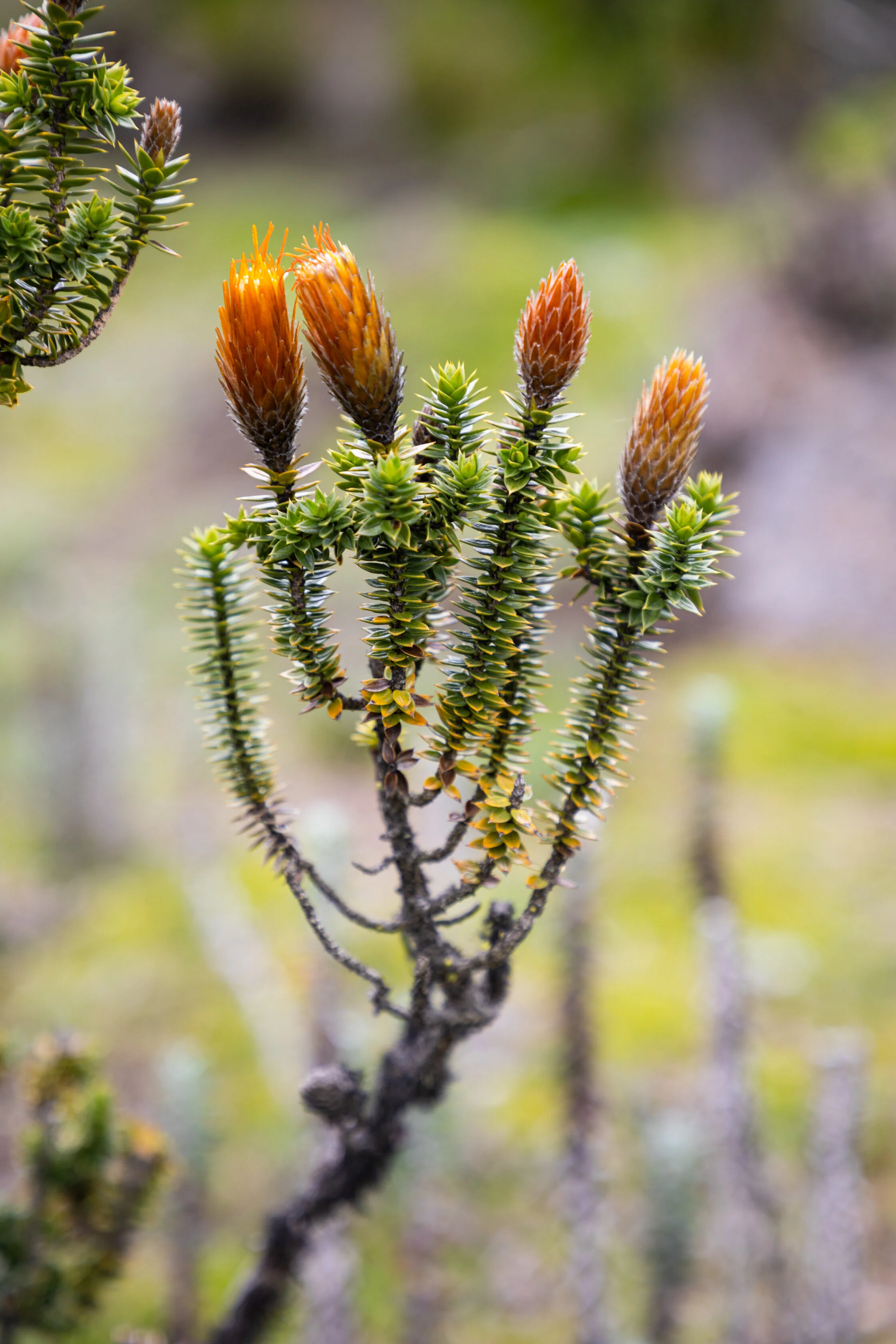



We had thankfully finished the difficult part of day two. Now, it was all downhill. We turned south and looked far off into the distant landscape. For a brief moment we caught a glimpse of Cotopaxi, the volcano at the end of this trek.




Twelve kilometers and six hours later we arrived at camp. Another perfect choice to call home for the night. Our tents were set up in a vibrant green canyon along a peaceful little river that wound its way through the carpet of moss and grass. The sides of the canyon were steep, but we were able to climb out of the canyon for an incredible view of Antisana to the east and the sprawling mountains to the west. We had plenty of time after hiking to explore the area and find the perfect spot for sunset. The clouds were thick as they had been all day, but we were hoping we would get lucky again and see another beautiful Ecuadorian sunset.





We found the perfect hilltop near camp to set up a timelapse of the sky as sunset approached. At the worst possible moment, Monica called us into the tent for dinner. It was hard to argue about dinnertime when you’re ravenous from a hard day’s hike, so we stepped inside and sat down to eat. Unfortunately, that is the exact moment the clouds cleared and the sky turned fiery-red as the sun lit up the sky. The sunset lasted for no more than two minutes and we missed the entire display. Luckily the camera was shooting away and we got to see the pictures.
